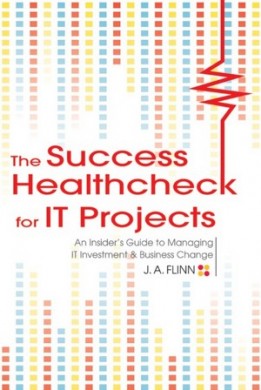Many projects fail. True. As an organizational change practitioner we really ask ourselves ‘Is mine likely to fail? What do I need to focus on for success?’ “What it takes to get from an F to a C is different to what it takes to get to an A.” This is the practical corollary of Einstein’s quote.
Now, the failure rates are as high as 70 % according to McKinsey. For those ready for a heart attack, Oxford based research by Chris Sauer finds failure rates as high as 93% when the measure is ‘On Time, On Budget, On Scope (OTOBOS) and intended results are delivered.
Why do we keep doing projects that might fail?
It is rational to do so in most organizations: it gives people a job, it allows sponsors to be seen to be active and it is often politically very dangerous to suggest that a project might really fail. Who wants to be the messenger and shot?
Warning signs on a risk register are one thing, but to call out ‘this project has a 15% chance of success’ is another. On the other hand, who wants to hang around a failure? Particularly if they are avoidable – which they are when you know what to look for.
We also tend to hope that this time will be different and that our good intent and better planning this time will be sufficient to over come the cynicism, agendas, and background cultural issues that get in the way.
Change is the Only Constant
At the human level, this is costly – frustration, doubt and cynicism at change, leadership intent and whether anything good will come of a project this time around. From the business perspective – it’s also costly. By one estimate, a minimum of USD 330 billion dollars was wasted on projects in 2008. That’s an astonishing amount.
Failure rates of this level have been around for decades. So have successful projects. It’s not all bad news.
 The reality is we all change all the time. Most of us have picked up an iPad (new this year), use a mobile phone (my first one was a brick in ‘98) or surf the internet to book a flight or check out a restaurant (me last night – and I couldn’t have done that a decade ago). The thing is, all these changes have helped me in some way or other – connect with those I want to, excited me or given me choices I didn’t have before.
The reality is we all change all the time. Most of us have picked up an iPad (new this year), use a mobile phone (my first one was a brick in ‘98) or surf the internet to book a flight or check out a restaurant (me last night – and I couldn’t have done that a decade ago). The thing is, all these changes have helped me in some way or other – connect with those I want to, excited me or given me choices I didn’t have before.
At the personal level, a few years ago I was dissatisfied with my life and I’ve consciously taken on a personal journey of transformation – and in truth, while there were periods that were black, I’m far closer now to who I wish to be than I was. I’m counting the process as a success.
With longer term transformations, the process is as much part of the ‘result’ as the official goal be it an individual or an organization.
If as individuals, we can change (a new phone) or transform (choose to become fundamentally different), as a human collective organizations can and do too.
As a long time project and change manager of assorted business projects (SAP, CRM, outsourcing, shared services, vision & mission, cost-cutting, re-engineering…) I got curious, what were the common factors of successful projects? What undermined success?
The Facts
For data oriented logical types:
- Up to 93% of projects fail to deliver their intended results
- This is the equivalent wasting of up to 70% of the investment
- Those that invested in adequate organizational change management delivered 46% higher returns
- 80% of the issues that undermine results from projects are identifiably and addressable up-front
(For more on the rational side of setting up for success, see Chapters 2 & 3 of The Success Healthcheck for IT Projects. Yes, it’s about business projects based on IT as IT is a pervasive source of change in our lives – and 99.9% of these require organizational change management!)
To put this in human scale terms, getting a successful project is like dating and staying married:
Meet a lot of people with only a small minority working out (assuming one is dating with the anticipation of a long term relationship).
- Numerous dinners, speed dating events, emotional roller coasters etc that seem to amount to little until Ms/Mr Right is found. Divorce is even more expensive option when a relationship finally comes to an end.
- Continued investment of emotional energy is needed to keep the relationship alive.
- Our friends and family can often tell us if it’s a fit very early on if we care to listen and act.
There are always the courageous ones who will shoot for the ‘A’ even at the risk of admitting to possible failure.
They asked me, “So if 80% of the risks to results from my project can be identified early on, what should I as a practitioner look for to do a Success Healthcheck?”
The Checklist
As an organizational change practitioner, there are 8 elements you should focus on. They are:
- Is the Intent Clear? If we don’t know what we are aiming for… Like in the search for Mrs/Mr Right specificity is good. There are eight areas that require definition – including the experience of the project;
- Is the Business Case Robust? If the funds are there, great. If they are not sufficient… Then political will and executive sponsorship under-estimate what is required for success or the project is not high enough on the bigger priority list.
- Is the Results Delivery Process Reliable? If we don’t reliably deliver results from projects, why is this time different (ok, yes, you are involved, but aside from this, what else is needed?) Where things have been simplified (KISS) so far that the KISS no longer reflects reality. My personal favorite over-simplification: “let’s assume that all the people are motivated by the same things and respond in the same way”
- Is the Motivation Energised? If the change is working with a groups motivation … or not If a change is not in the personal interests of individuals, why would they be enthusiastic? Resistance is someone refusing to do what they are told – often as it is not in their interests. That’s a sensible lack of motivation! It’s rational at the individual level and dysfunctional for the organization.
- Does the Project Align to Current Strategic Position? The bigger the gap between current reality and the project’s strategic vision, the bigger the job (and the more the business case needs to be sound). And the more risky it is, the more things are likely to change and the more complex. Exciting, stimulating – and less likely to succeed.
- Does the Operational Context Support the Project’s Intent? Operational rules in many parts of an organization are like the challenges of a golf course: roughs, water traps etc. You can play a game, but it is harder and requires more skill. Where you are going to have to do more work is in the organizational practices that – while often well meaning for a stable environment – are not supportive of a dynamic environment.
- Does the Flow Favor Project Intent? Does the flow of organizational memory and history favor your project? Are there recent good experiences that you can build upon? On the down side, is there left-over cynicism that your project needs to deal with from past failures?
- Are the Balancing Dynamics Aiding Project Intent? This is the home of complexity and dynamics and systems and ‘absorbable stages’. Be attentive to areas where people or events can convert state from being neutral to enthusiastic or to being against. Finally, also look for areas in the organization where burnout or turnover will affect performance and thus your projects.
Now, having identified a few ‘health risks’ you can make an active choice… to return to our dating/marriage metaphor…
- To get the support and advice you need to address risks to the project/relationship
- Decide there are too many risks and that this project is a bad date or a divorce waiting to happen and quit now by closing out the project
- Wait and see.
Or you could get a copy of the Success Healthcheck for a colleague and give it to them with a note to say ‘let’s have a healthy project’.
___________
Check out the Cool Friends page on this blog for Joanne’s profile.



